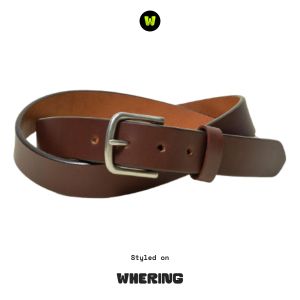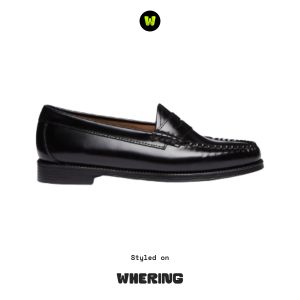Tracking Clothing Usage – A Waste of Time or a Tool for Smarter Consumption?

About Clothes and Their Use
Clothing not only protects the wearer but also helps shape personal style and identity. Through dressing and clothing choices, we can communicate something about ourselves, and clothing is also connected to our social environment, such as norms or fashion trends. Clothes are acquired both out of necessity and on impulse.
According to Nordic research, most consumers (40% of respondents) estimate their wardrobe contains between 100–200 items. Other studies have show a number as high as 650. The number of garments plays a key role in how many times each item is worn. The fewer clothes one owns, the faster the rotation between garments.
It often feels like, even with a closet full of clothes, there’s nothing to wear. Some people enjoy having a wide selection, while others prefer to minimize choices and build a more minimalist wardrobe. Of course, other factors like hobbies, seasons, and storage space also influence the contents of a wardrobe. Many hobbies require specific clothing, and in Finland especially, changing seasons significantly affect what kinds of clothes are needed. Some have ample closet space, while others must limit their belongings due to physical constraints. So, there are various conditions that shape our relationship with clothing and how we maintain it.

Unused Clothes – A Threat or an Opportunity?
Findings from Nordic textile research show that most people leave some garments unused because they no longer fit or there’s no suitable occasion to wear them. Up to 40% of wardrobe items are considered “sleeping” garments—not actively in use. A Danish consumer study found that challenges in reducing clothing consumption stem from impulse buying, situational dress codes, curiosity, and time-related issues.
But what if clothes just sit unused in the closet? Surely they don’t harm anyone. Out of sight, out of mind.
On the other hand, we can consider the potential of those dormant clothes. What if all the sleeping capital in Finnish wardrobes were put back on the market for others to buy? What would the consequences be? According to secondhand expert Timo Huhtamäki, the potential is enormous—possibly worth billions of euros. He believes harnessing this potential could benefit Finland’s national economy, as many of the same product categories are imported. This causes a trade deficit. In other words, if these dormant items could be sold to other consumers, our economy might improve, and we could avoid side effects of imported goods, such as postal and customs congestion and the accumulation of low-quality fast fashion.

Clothing Lifespan and Cost
The Consumer Research Centre has created an estimate of a reasonable minimum consumption level that allows a person to live and participate in society. Consumption is divided into categories, one of which is clothing. The latest update to the reference budget was made in 2024. According to it, the reasonable minimum clothing budget for a single man is €612 per year (€51/month), and for a woman, €780 per year (€65/month). The estimate assumes clothes last 3–5 years, except for items like winter coats or bathrobes, which are expected to last seven years. The budget assumes women own about 85 garments and men 67—clearly lower numbers than most Nordic consumers report. (Lehtinen et al., 2020 and Lehtinen, 2024.)
So how many times can a single garment realistically be worn, and what is its cost per use? It depends on the garment, of course. Olof Hoverfält has tracked and recorded his clothing consumption. According to his data, a basic undershirt lasts about 20 wears. These types of garments are worn most frequently, as they’re used daily, while outerwear is changed more often depending on the situation.
I’ve been tracking my own clothing consumption for a long time. Initially, I reflected on my relationship with clothes, and later, I went a year without buying any garments—new or secondhand. For about a year now, I’ve been monitoring my clothing use similarly to Hoverfält. I started using a mobile app called Whering. You can add your entire wardrobe to the app and track each item’s usage and cost per wear. You can also plan outfits or follow other users and their content. I’ve used the app rather casually, but it still gives me a general idea of which garments I wear regularly and which ones get less attention.
Whenever I buy something new, I try to add it to the app so I can track its usage and especially its cost per wear. I find this data particularly interesting for more expensive purchases. For example, last winter I bought a wool cardigan after a long search, as I couldn’t find a suitable one secondhand. The cardigan was from the Finnish brand Borse e Cose, which has since filed for bankruptcy, and I bought it from a local store in Turku. It was on sale, which influenced my decision. The cardigan cost €180. It has now been in my wardrobe for 202 days, and I’ve remembered to log its use on 70 of those days. So I’ve worn it a little under half the time I’ve owned it. Of course, its usage was influenced by the fact that I bought it in winter and that I bought it for a specific purpose. Currently, its cost per wear is €2.57. Quite reasonable, and I believe the garment will last for years.
On the other hand, I also have clothes that have been worn only a few times or very little—such as party dresses and summer dresses. Even if I try to style them differently and wear them year-round (as I sometimes do), they still get less use than basic garments. However, they’ve often been affordable finds from flea markets and add variety and joy to my frequently worn outfits.
I recognize that tracking clothing use isn’t for everyone. I’m not particularly enthusiastic about it myself. However, I’ve noticed that tracking has changed my attitude toward buying new clothes. If I used to avoid buying new, now I think that if I buy high-quality clothes thoughtfully, even new ones, I can get reliable garments that will serve me for years to come.
One can reflect on why certain garments are chosen more often than others, and what kind of value clothing holds in everyday life. By becoming aware of and tracking one’s consumption behavior, it’s possible to learn something new about oneself—and perhaps even realize that one can manage with fewer clothes than originally thought. Alternatively, one might come to understand that by purchasing high-quality and durable items, it’s possible to save a significant amount of money in the long run and find garments that serve a lifetime, not just a moment.
Eerika Heinonen
Project planner
Turku UAS
The article was written as part of the Baltic2Hand project, which promotes the reuse of textiles and reduces textile waste by creating new business models for operators of second-hand clothing. The project involves the circular economy business models research group of Turku University of Applied Sciences. The Baltic2Hand project has been funded by Interreg Central Baltic 2021-2027 and partly with the support of the European Union.

